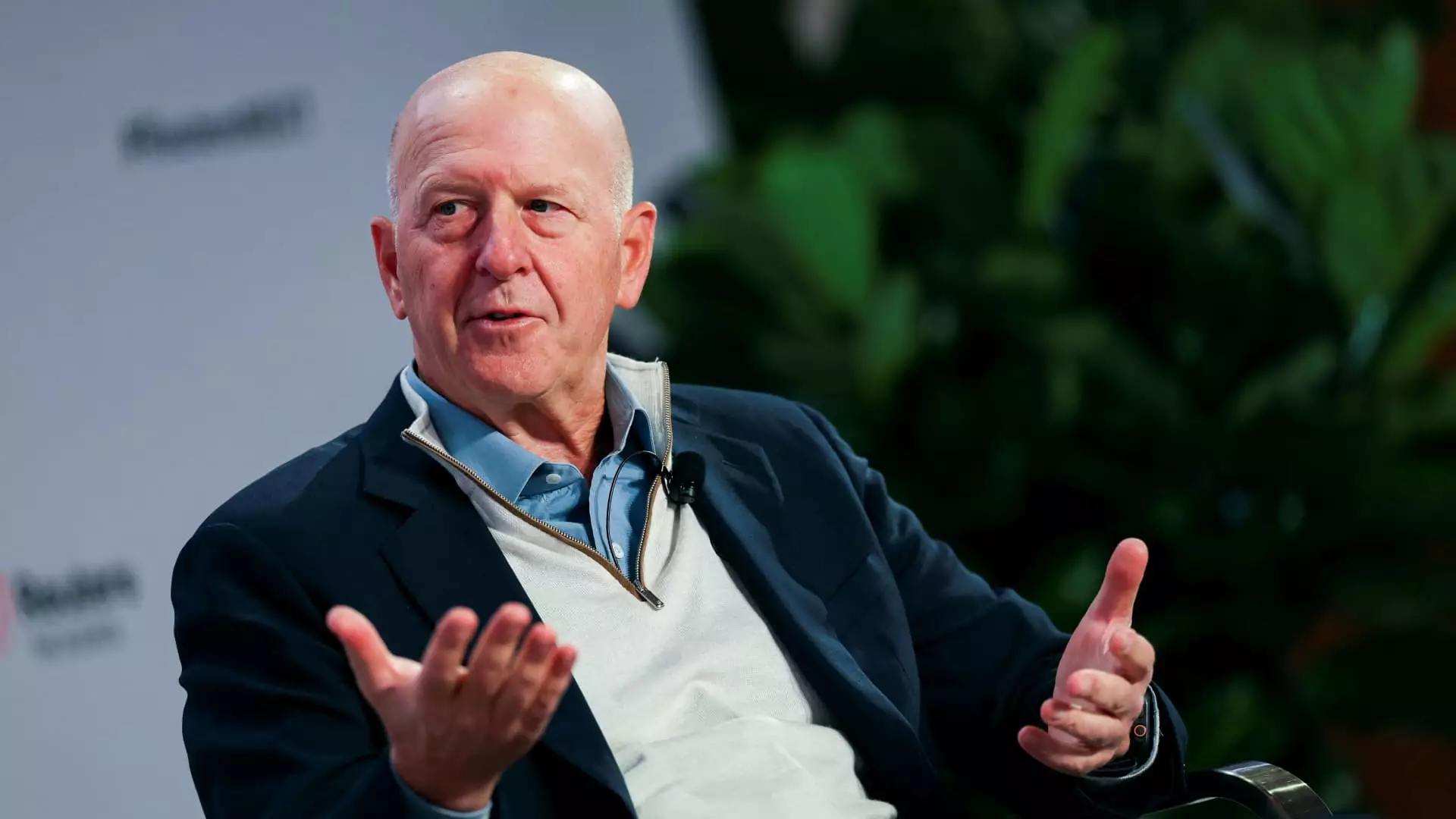The recent comments made by Goldman Sachs CEO David Solomon regarding the future of Initial Public Offerings (IPOs) have sparked interest across the financial sector. Speaking at a summit in Silicon Valley, Solomon suggested that the stagnation in the IPO market is nearing its conclusion. His optimism reflects broader trends within the capital markets and political landscape, yet it highlights the inherent complexities and challenges that remain.
Shifting Political Landscape and Economic Optimism
David Solomon’s assertions come at a pivotal moment, coinciding with President-elect Donald Trump’s inauguration. Solomon articulated that the political shift towards Republican leadership is already bearing fruit in the business sphere, fostering a more conducive environment for deal-making. He observed a “significant backlog from sponsors,” indicating a growing appetite for IPOs and mergers and acquisitions (M&A). This anticipatory fervor aligns with positive economic indicators, including a favorable inflation report that contributed to a notable uptick in the stock market, particularly the S&P 500.
The implications of this political and economic context are profound. Companies, especially in the tech sector, have been facing an uphill battle due to a regulatory climate that has stymied growth through M&A. Solomon’s commentary reflects a budding sense of optimism among investors and corporations alike, suggesting that the static nature of the IPO market might soon give way to vibrant activity.
Despite Solomon’s optimistic outlook, the tech IPO market has remained largely dormant since the latter part of 2021. This stagnation can be attributed to a convergence of unfavorable macroeconomic conditions—chiefly surging inflation and increasingly stringent interest rates—which have made potential investors wary. Solomon pointed out that tech stocks began to lose their appeal during this period, leading to a significant decline in overall IPO activity.
Interestingly, while companies like ServiceTitan have managed to debut on the Nasdaq, they stand as exceptions in a landscape where venture-backed IPOs have become quite rare. Solomon noted that values have retracted since the highs of 2021, but as confidence rebuilds, companies are poised to re-engage with the public market.
However, the backdrop of stringent regulatory environments complicates matters. For instance, Cerebras, a chipmaker aiming to go public, experienced delays due to a review by the Committee on Foreign Investment in the United States (CFIUS). This showcases the ongoing barriers that firms face, which could dampen the anticipated resurgence in IPOs.
The Structural Challenges of Going Public
One of the more profound observations made by Solomon was regarding the structural challenges that companies face today when considering a public offering. He remarked on the drastic decrease in the number of public companies in the U.S., which has plummeted from roughly 13,000 to around 3,800 over the past quarter-century.
This decline can be attributed to heightened standards for disclosure and governance, making the prospect of being a public entity less attractive for many organizations. Coupled with the substantial availability of private capital, the appeal of remaining private is strong for many firms. Solomon described the reality of being a public company as “not fun,” acknowledging that the benefits must be weighed against the drawbacks of increased scrutiny and regulatory obligations.
As we look ahead, it seems that the trajectory of the IPO market depends not only on external economic and political factors but also on the internal readiness of companies to make the leap to the public sphere. While Solomon expresses confidence in a renewed market, the reality remains complex. Companies must navigate various pressures, including market conditions, investor sentiment, and regulatory landscapes before pursuing an IPO.
The message delivered by David Solomon encapsulates the hope for a revival in the IPO sector. However, it is critical to recognize the multifaceted nature of the market and the various factors that will influence its trajectory. The future may hold promise, but it will require a concerted effort by companies to adapt and thrive in an ever-evolving economic environment.

